When you hear the word desert, the mind usually drifts towards sun, sand, and dunes. But in truth, deserts are much more varied than you’d imagine. They come in all shapes and sizes and vary quite a lot from one part of the world to the next one.
You’ll probably be surprised to learn that the largest desert in the world is actually the Antarctic.
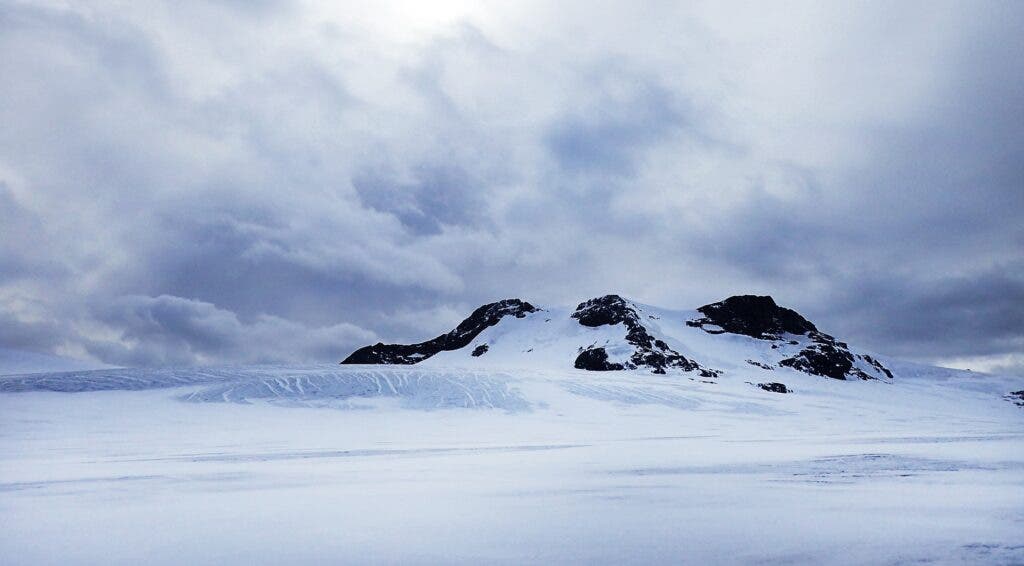
Deserts are far more than the desolate landscapes we often picture them as. They are biologically rich habitats with a wide array of animals and plants that have adapted to living there. Some deserts are among the last remaining areas of true wilderness on the planet, yet many people call them home: more than one billion people (a sixth of the global population) actually live in desert regions.
Deserts cover more than one-fifth of the Earth’s land area and can be found on every continent — and only 20% of them are covered in sand.
So what makes a desert?
A place that receives less than 25 centimeters (or 10 inches) of rain per year is considered a desert. They are part of a wider type of region called drylands, which are defined by a scarcity of water. Drylands can lose more moisture through evaporation than they obtain from precipitation.
Despite the usual misconceptions, deserts can be both hot and cold. The Sahara is the largest hot desert in the world and can reach temperatures of up to 122 degrees Fahrenheit (50 degrees Celsius) during the day.
But deserts can also be cold, such as the ones in the Antarctic and the Arctic — which also happen to be the largest two deserts overall. Cold deserts don’t necessarily need to be freezing: the Gobi desert in Asia is considered to be a cold desert since it is sometimes covered by snow and frost. However, winds can cause dramatic temperature shifts in the Gobi desert, shifting from −40 °C (−40 °F) in winter to 45 °C (113 °F) in summer. These rapid temperature shifts occur not only seasonally, but can even take place in the same day.
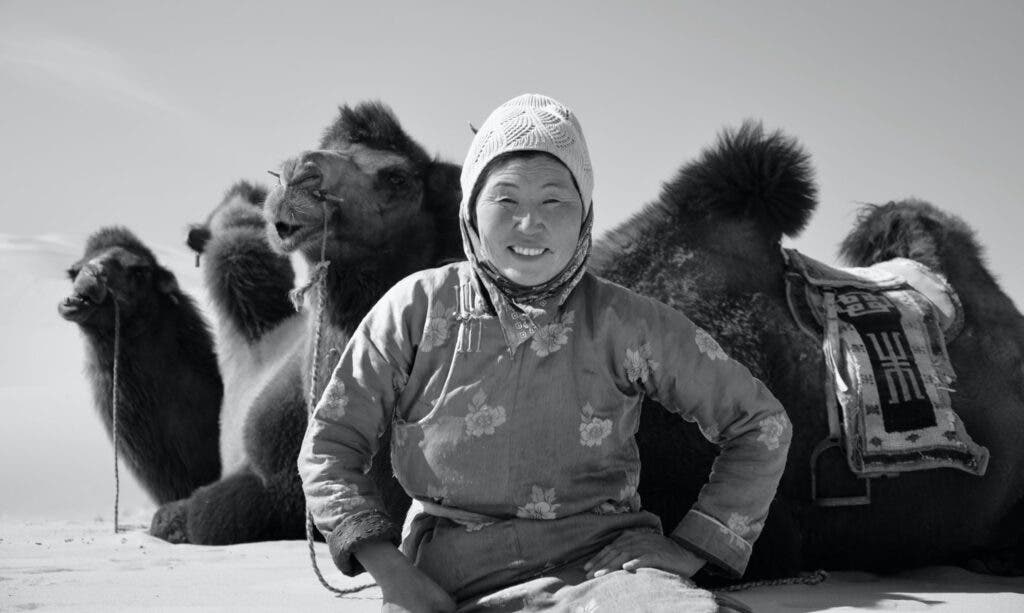
The world’s driest deserts like the Atacama Desert in Chile have areas that get less than .08 inches (or two millimeters) of precipitation a year. They are such harsh environments that researchers have studied them to get a better idea about life on Mars. But every few years they a very rainy period called “super blooms.” The Atacama Desert may be the oldest desert on earth, being hyper-dry for over 3 million years.
The largest desert in the world
Purely in terms of size, the Antarctic Desert is the largest desert on the planet, measuring a total of 13.8 million square kilometers (or 5,500,000 square miles). Antarctica is not only the most isolated continent on Earth but also the coldest. It’s considered a desert as its annual precipitation is less than 51 millimeters (or two inches).
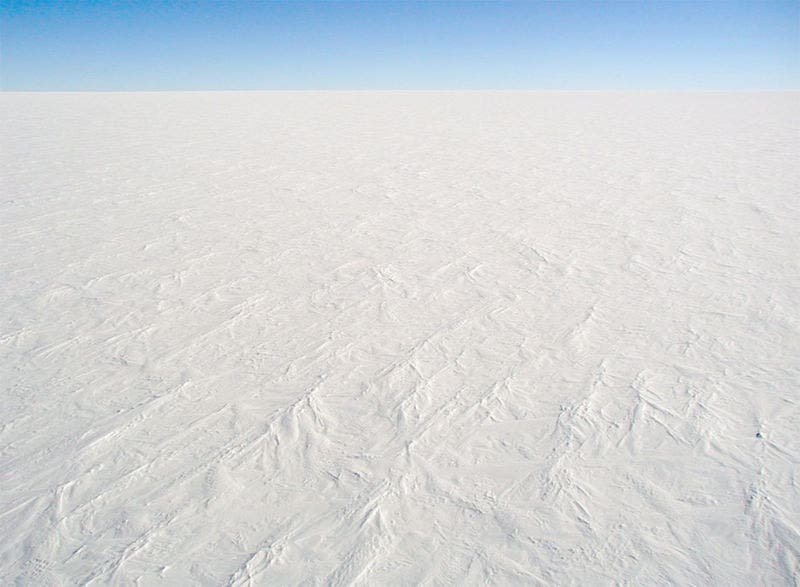
To put that into perspective, much of the Sahara Desert gets twice as much rain as the Antarctic. The coastal regions of Antarctica receive more rain, but still average only 200 millimeters (or eight inches) per year. Unlike most desert regions, however, the rain doesn’t soak into the ground. Instead, the snow piles on top of itself.
Despite having so little rain, Antarctica still gets massive windstorms. Just like the sandstorms seen in hot deserts, the high winds pick up snow and turn into blizzards. The storms can reach speeds of up to 320 km an hour (200 mph) and are one of the reasons the continent is actually so cold.

The continent is covered by a permanent ice sheet that contains 90% of the Earth’s freshwater and averages 1.6 kilometers in thickness. Only 2% of Antarctica isn’t covered by ice, an area mainly located along the coasts where penguins, whales, birds, seals and other animals reside.
There aren’t permanent human residents in Antarctica, but between 1,000 and 5,000 researchers can be found at different times of the year in the research stations across the continent. The largest one is McMurdo Station, located on the tip of Ross Island and managed by the United States.
The Antarctic can also get freakishly cold. The coldest temperature ever recorded was taken at the Soviet Vostok Station on the Antarctic Plateau. It reached a historic low of -89.2°C (-129°F) on July 21st, 1983, and was obtained using ground-based measurements. Satellite data indicated a temperature of around -93.2 °C on August 10th, 2010 but the reading hasn’t been confirmed.
However, climate change is making the Antarctic lose mass, and it’s also increasing precipitations
“Calving icebergs and melting ice shelves have gotten lots of attention because they’re the most visible impact of ongoing climate change to Antarctica,” said Jan Lenaerts, an assistant professor in CU Boulder’s Department of Atmospheric and Oceanic Sciences and an expert on the Antarctic. “But the input side of the equation, which is precipitation falling in the form of snow, hasn’t drawn the same level of study.”
“The pace at which snowfall is increasing is not keeping up with the ocean-induced losses,” Lenaerts said. “The Antarctic Ice Sheet is still losing mass.”
Other large deserts in the world
Curiously, the second-largest desert in the world is also cold. The Arctic Desert covers a total area of about 13,7 million square kilometers (5,29 million square miles). The total amount of precipitation is below 250mm (10 inches), which is predominantly in the form of snow.
The desert partially occupies parts of territories claimed or controlled by Canada, Denmark, Norway, Russia, Sweden, and the United States. The average temperature in the Arctic Desert is -20 °C, reaching as low as -50 °C in the winter. During summer, the sun doesn’t set for 60 days. Then, in winter, there are extended periods of darkness.
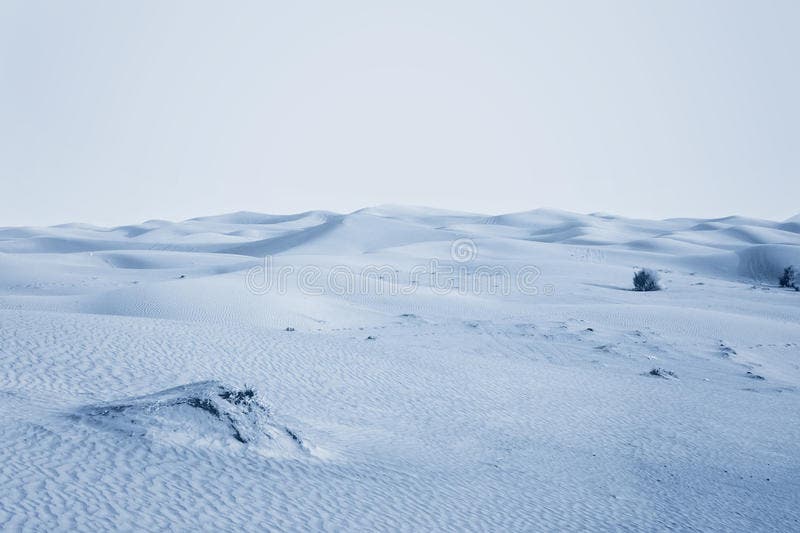
The third-largest desert in the world is the well-known Sahara, which is also the world’s largest hot desert. It has a total size of 9,4 million square kilometers (or 3,3 million square miles). It occupies most of the land in North Africa except for the regions of the Maghreb, the Atlas Mountains, and the coastal region next to the Mediterranean Sea.
The average annual rainfall ranges from very low in the northern and southern fringes of the desert to nearly non-existent over the central and eastern parts. Most of the Sahara receives less than 20 millimeters (or 0.79 inches). Temperatures are also quite intense in the Sahara, and can rise to more than 50 °C.
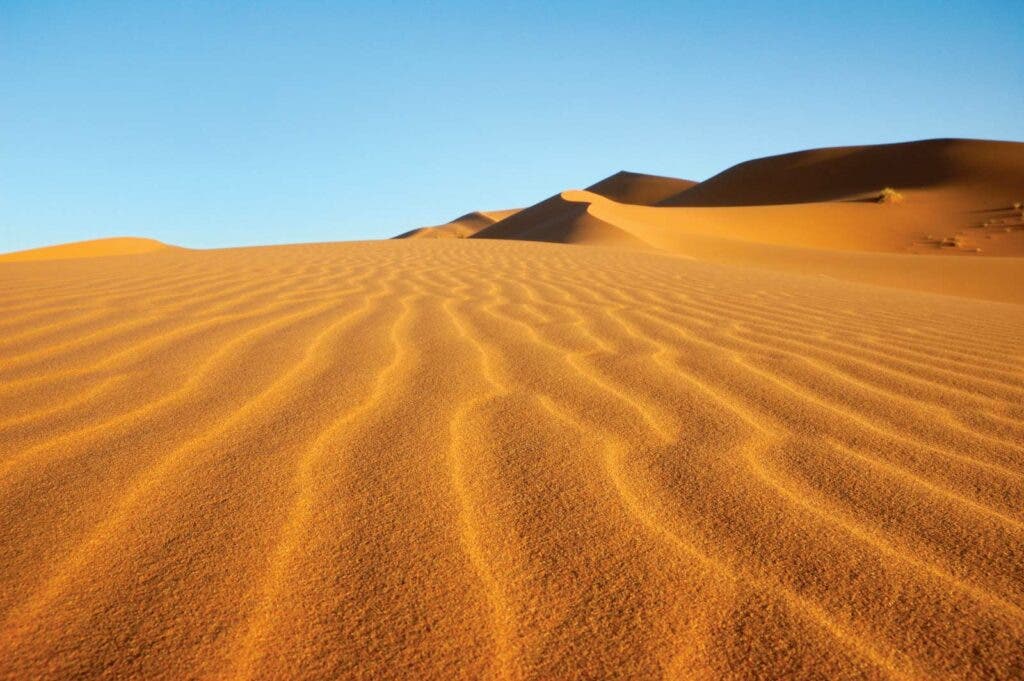
Located in Western Asia, the Arabian desert is the fourth largest one on Earth. It covers an area of 2,3 million square kilometers (or 900,000 square miles). It encompasses much of Yemen, the Persian Gulf, Oman, Jordan, and Iraq. Its center, known as the empty quarters, forms the largest continuous body of sand in the world.
The climate of this area is very dry. Temperatures oscillate between regular, characteristically high heat on one end of the spectrum to seasonal nighttime freezes on the other. The annual rainfall is around 100mm on average, but the driest areas receive as little as 30 to 40 mm of rain a year.
Also in Asia, the Gobi Desert is known as the fifth-largest desert in the World. It has a total land area of 1.2 million square kilometers (or 500,000 square miles) and covers parts of northwestern and northern China, as well as southern Mongolia. It’s called the “rain shadow desert” as the Himalayan Mountains block the rainfall from the desert. It’s not a sandy desert and instead has exposed, bare rock.
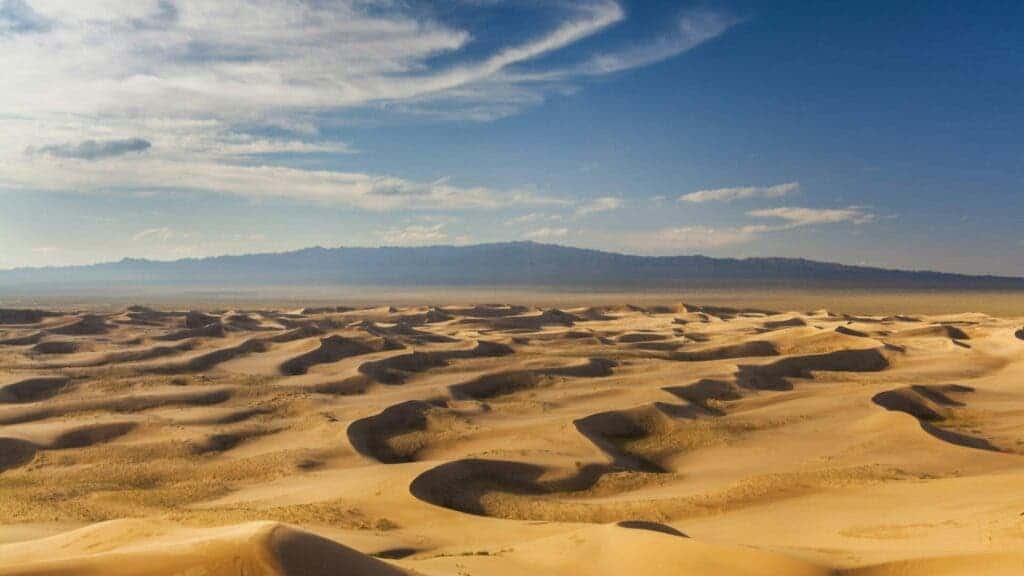
Desertification and environmental challenges
A significant number of the world’s semi-arid regions are turning into deserts at record speed through a process known as desertification. This isn’t caused by natural drought but rather by deforestation and demands from human populations that establish in semi-arid lands.
For example, in northern China, the expansion of urbanization, which left the land unprotected against wind erosion, and the accumulation of sediment from a surrounding desert recently created a desertification problem. Replying to it, the government built a so-called great green wall to act as a border against the desert.
But that’s not the only challenge that deserts are dealing with. Species in existing deserts are threatened by a warmer world. Higher temperatures cause more wildfires that then change the desert landscapes, eliminating slow-growing trees and shrubs and replacing them with fast-growing grasses.
Scientists have warned that the iconic Joshua tree from California might not survive a hotter climate. If that’s actually the case, the effect would also be severe in other species such as the yucca moth, which deposits its eggs into the flower of the Joshua tree — and the effects could cascade down the food chain. Many desert birds could also be affected by dehydration and might not be able to survive in hotter deserts.
Tibor Navracsics, Commissioner for Education, Culture, Youth and Sport, responsible for the Joint Research Centre (JRC), who performed over-arching research on desertification, explained:
“Over the past twenty years, since the publication of the last edition of the World Atlas of Desertification, pressures on land and soil have increased dramatically. To preserve our planet for future generations, we urgently need to change the way we treat these precious resources. This new and much more advanced edition of the Atlas gives policymakers worldwide comprehensive and easily accessible insights into land degradation, its causes and potential remedies to tackle desertification and restoring degraded land.”
“It is imperative that effective policies and sustainable agricultural practices be put in place to reverse the decline of drylands,” says Prof. Hans van Ginkel, UN Under Secretary-General and Rector of UNU.
Deserts are a natural part of our ecosystem, but as it is so often the case, human intervention is changing the natural cycles. This change is often much quicker than natural change, which renders ecosystems incapable to adapt in time.


